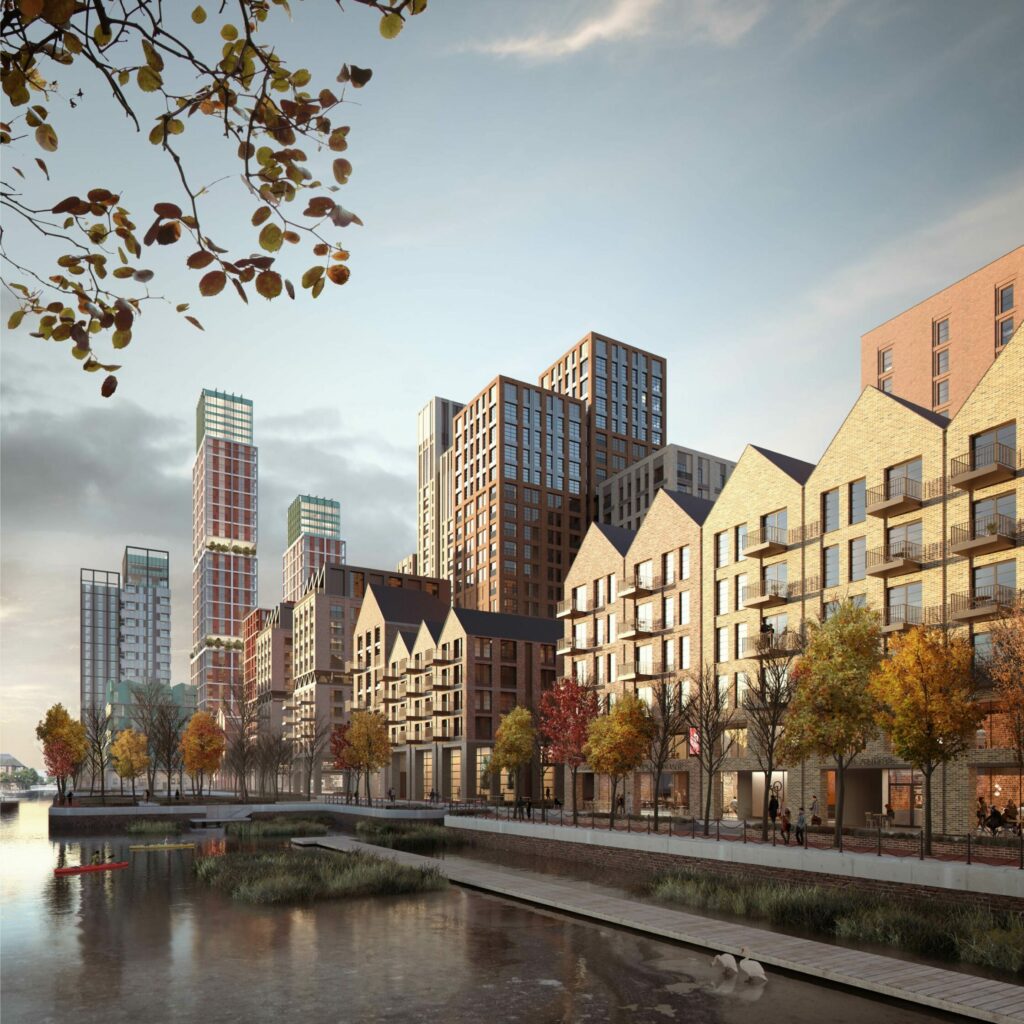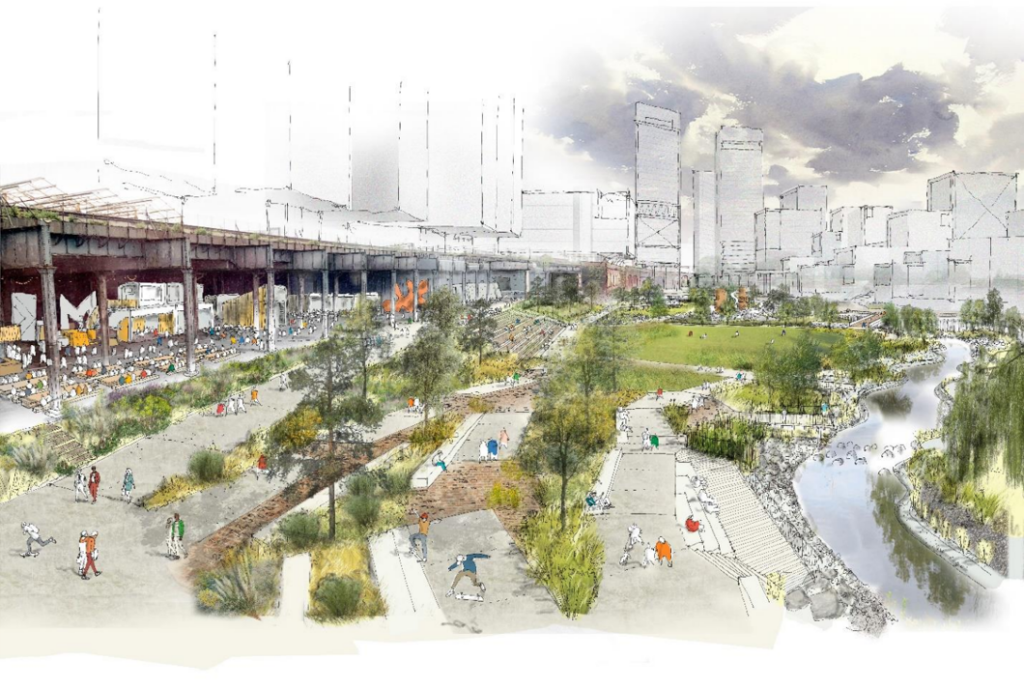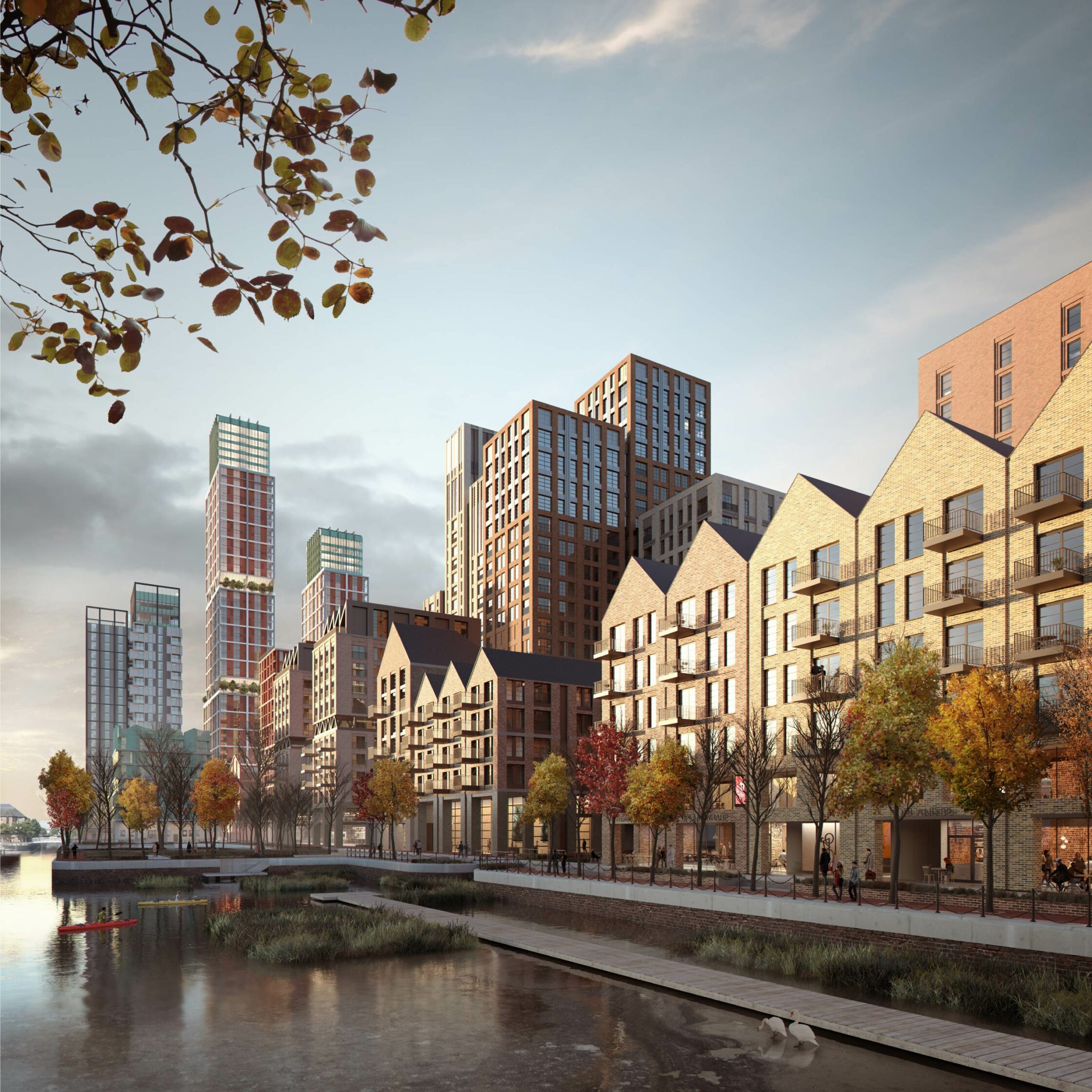“We cannot see wind—and it can be hard to explain to our clients—but Orbital Stack allows us to do just that.”
Allison Piehn, Commercial Director, Studio Egret West Limited

The ask
Strategic urban design that amplifies nature and puts people first. This is what UK-based architectural firm, Studio Egret West (SEW) is all about. With a multi-disciplinary team of urban designers, architects, landscape architects, graphic designers, and model makers, SEW applies a sustainable lens to every project.
This way of designing was evident in SEW’s proposed masterplan designs for a large, mixed-use regeneration project in North London. The large outdoor common space, narrower park spaces between buildings and raised outdoor amenity spaces, immediately became focal points. With their landscape urbanist perspective, SEW wanted all gardens and spaces to be comfortable and welcoming.
Importantly, SEW is not alone in wanting community focused outdoor spaces. Through the pandemic, the public’s appreciation for nature and the outdoors grew, therefore elected officials took notice. Positive outdoor places are proven to become profitable communities that only continue to grow. Hong Kong, Singapore, and the UK are all regions that are prioritizing the value and ROI of positive, outdoor amenities.
The challenges
Like all projects, SEW wanted to know how this design could benefit the entire community. With new restaurants, retail, offices, and residential components, this multi-use community offers many things for many people. Recognizing the trend of people moving out of cities, SEW knew this masterplan must offer a more livable experience within a dense, inner suburb. That meant ensuring that the massing does not interfere with the access and comfort of the outdoor spaces. Understanding how wind, solar and shadowing interact with the structures in this neighbourhood is paramount to it benefiting all users.

Traditionally, a wind tunnel study confirms how climate responsive a proposed design is. They are completed toward the end of the design cycle. Therefore, it is often too late to make significant changes. The studies already are lengthy and can be expensive. This often discourages developers from making more changes. Plus, decision makers are often unable to physically attend wind tunnel tests, compromising their full understanding of climate impacts. With less understanding about how wind may interact with a design—or how some changes may improve a plan—the less likely a change will be made.
The solution
Orbital Stack enabled SEW to conduct several climate studies early in the design process. The goal was to solve the challenge of late-stage wind tunnel studies. An early consulting session with a microclimate expert confirmed their direction and, as Commercial Director, Allison Piehn confirms, the app allowed the team to “see climate.” Streamlines highlighted wind flow patterns across and through the prioritized outdoor amenities. Annotated wind direction and the heat map illustrated how wind was likely to move.
Plus, Orbital Stack’s ability to bring solar and wind together—total thermal comfort—was groundbreaking for the team. With the added ability to view the project in different seasons, everyone on the team better understood the impacts of climate on the proposed designs and could mitigate issues earlier.


locations of an early design iteration.
With this better visibility into the entire project, SEW was also able to make recommendations earlier to the client. The decision makers were also able to “see climate” through the visual report and make more informed choices.

The result
By introducing Orbital Stack early into this masterplan, SEW was able to work out high-level design challenges earlier. The app allowed SEW to see the complete picture of solar, wind, and thermal comfort impacts on the proposed plans. They were able to identify necessary massing design changes to achieve another memorable, ecology driven landscape design for the firm. Now, when a proposed design undergoes a wind tunnel study, the focus will be on validating plans and solving less fundamental challenges.
Orbital Stack will continue to support SEW as it continues to improve people’s environments and build better, more people-focused communities. SEW’s design process will now even include some “Orbital Stacking” time. Highlighting the cost effectiveness of the tool, Piehn concludes, “Orbital Stack provides intrinsic value to make good decisions and good designs.”
Learn more about our vision and why RWDI turned Orbital Stack into a dedicated company.
